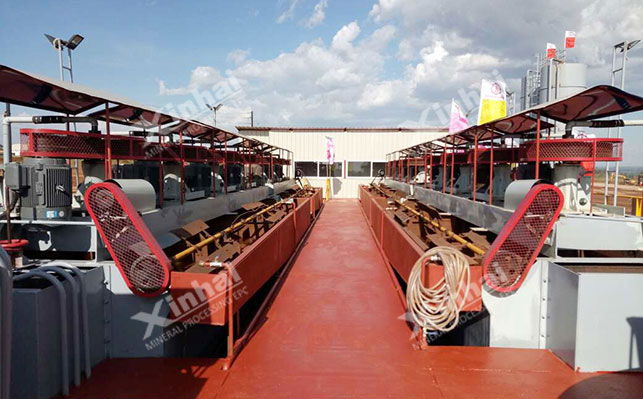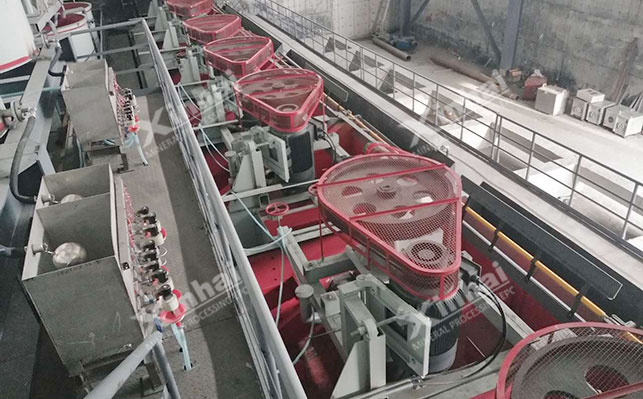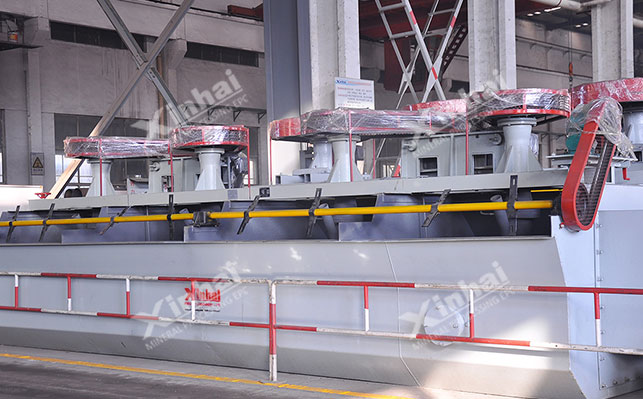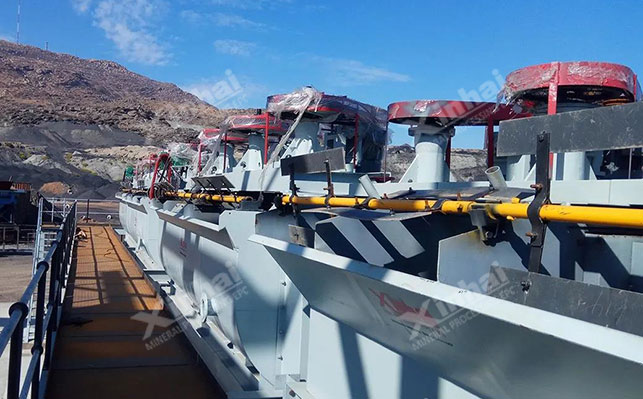
15311826613
Click to add WeChatIn order to improve the comprehensive utilization rate of associated valuable elements and resources, people have conducted a lot of research and improvements on the flotation separation process of pyrite and chalcopyrite. These improvements are aimed at adapting to the changes in mineral flotation characteristics and ore properties, and optimizing resource recovery rate and processing efficiency. At present, there are five commonly used flotation separation process flows: direct flotation separation process flow, preferential flotation process flow, mixed-preferential flotation process flow, mud and sand separation process flow, and combined beneficiation and smelting process flow. Each process has its specific applicable conditions and operating characteristics, which can effectively cope with different ore types and processing requirements. This article will introduce the status of these five flotation separation process flows in detail, and explore their respective scope of application, process flow and advantages and disadvantages.

The direct flotation separation process is mainly used to treat blocky copper-containing pyrite with high sulfur content in the original ore. First, the ore is finely ground to ensure the appropriate particle size. Then, during the flotation process, inhibitors are used to inhibit the flotation of pyrite, thereby effectively separating copper minerals. Finally, the flotation tailings are sulfur concentrates. The process is simple to operate, efficient, and can quickly obtain sulfur concentrates. It is particularly suitable for processing ores with high sulfur content. However, for ores with very high sulfur content, it may be necessary to adjust the dosage of inhibitors and operating conditions to ensure the effective separation of copper minerals.

When the ore is a massive copper-containing pyrite, and the direct flotation separation process cannot obtain qualified sulfur concentrate, it is more appropriate to use the priority flotation separation process. The first flotation is to obtain copper concentrate, and then the copper tailings are subjected to sulfur flotation to obtain sulfur concentrate. This process can also be used to treat impregnated copper-sulfur ores. It is worth noting that when flotating copper concentrate, attention should be paid to the control of the amount of inhibitor to save the amount of activator required for subsequent flotation of pyrite. In addition, according to the particle size characteristics of the ore, the coarse concentrate or the medium ore should be re-grinded to further improve the flotation index of copper.

When the original ore is a disseminated copper-sulfur ore, the concentrator generally adopts a mixed priority flotation separation process. First, under the conditions of coarse grinding particle size and low pulp alkalinity, the copper-sulfur mixed concentrate is floated out, and then lime and other inhibitors are added to the pulp, and the mixed concentrate is re-grinded to inhibit the floating of pyrite in the high-alkalinity pulp, and then the copper concentrate is obtained by flotation. This process can significantly improve the economic effect of the concentrator, but it requires high control accuracy for the operation.

Mud and sand separation process is suitable for occasions where the ore part has a high sulfur content and the gangue minerals are mainly concentrated in fine mud. In this process, the copper-sulfur ore is first coarsely ground, and then mud and sand are separated to effectively separate the mud and ore, thereby reducing the negative impact of mud on copper flotation. This can significantly improve the quality of copper concentrate and improve the production efficiency of sulfur concentrate. This process ensures a higher copper mineral recovery rate and optimizes the grade of sulfur concentrate by reducing fine particle interference during flotation separation. For ores with high fine mud content, the mud and sand separation process is particularly effective and can improve the stability and economy of the entire flotation system.

The beneficiation and smelting combined process is suitable for copper-sulfide ores that are severely oxidized and contain a large amount of copper sulfate. First, the raw ore is crushed to an appropriate particle size, and then the ore is washed and deslued. After the solid-liquid separation of the ore mud, sponge iron can be used to replace the copper ions in the liquid phase, or ion exchange, extraction, electrolysis and other methods can be used to recover the copper ions in the liquid phase. After washing, the ore enters the flotation operation for separation.
This process effectively divides the treatment of oxidized ore into two steps: first, remove the ore mud by washing and desludging to reduce the interference of fine mud on subsequent flotation; then recover the copper ions in the liquid phase by the combined beneficiation and smelting method to further improve the recovery rate of copper. The combined beneficiation and smelting process can not only treat severely oxidized ores, but also significantly improve the recovery efficiency of copper minerals and optimize the overall treatment effect.
Through the above brief introduction to the five flotation separation methods of chalcopyrite and pyrite, we can understand that each process has its unique application conditions and operating requirements. These flotation separation processes are also constantly being improved and optimized, which can not only improve the efficiency of mineral processing, but also improve the utilization efficiency of ore resources. In order to further improve the utilization rate and economic benefits of ore resources, understanding and mastering these process flows is of great significance to improving mineral processing efficiency and resource utilization.